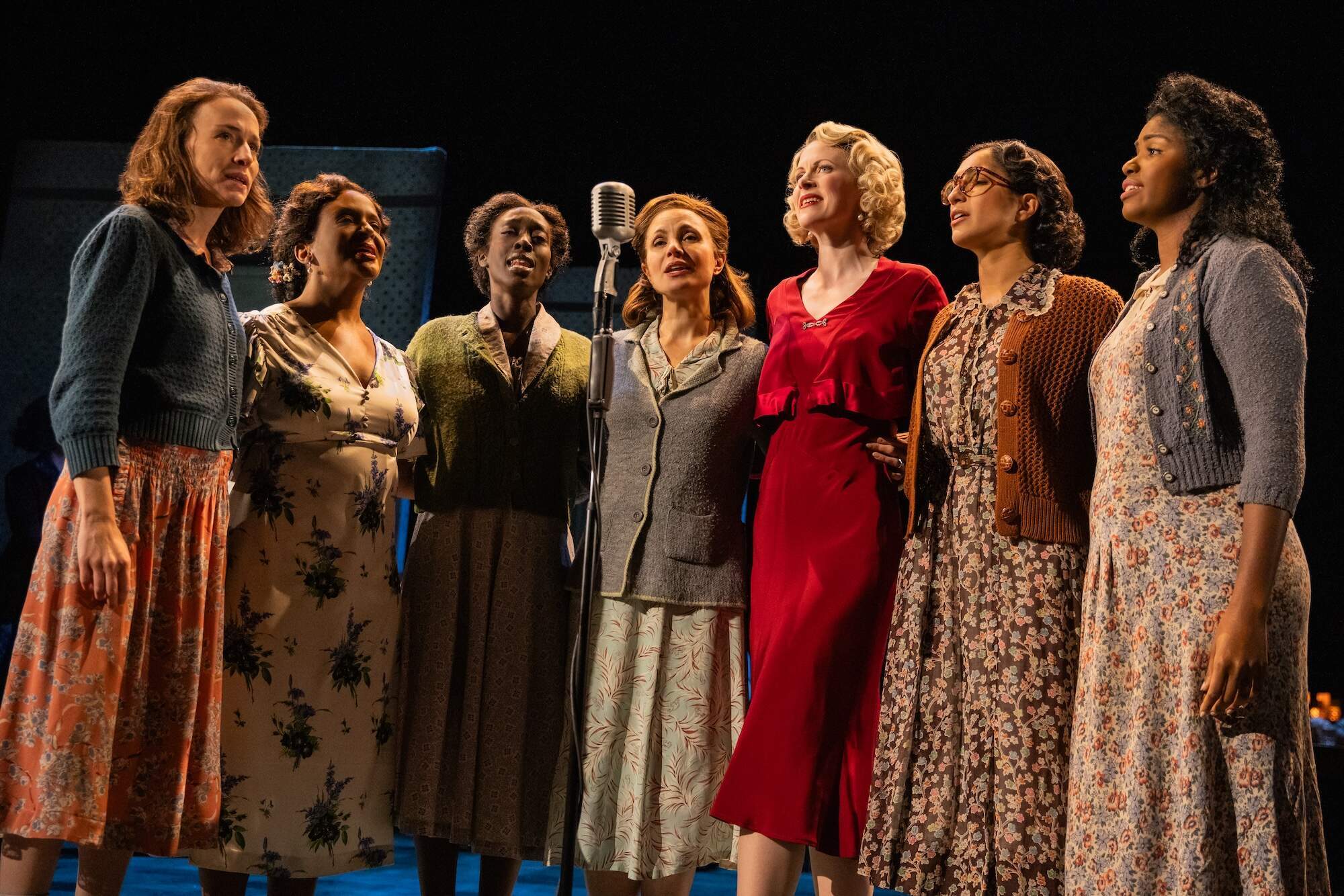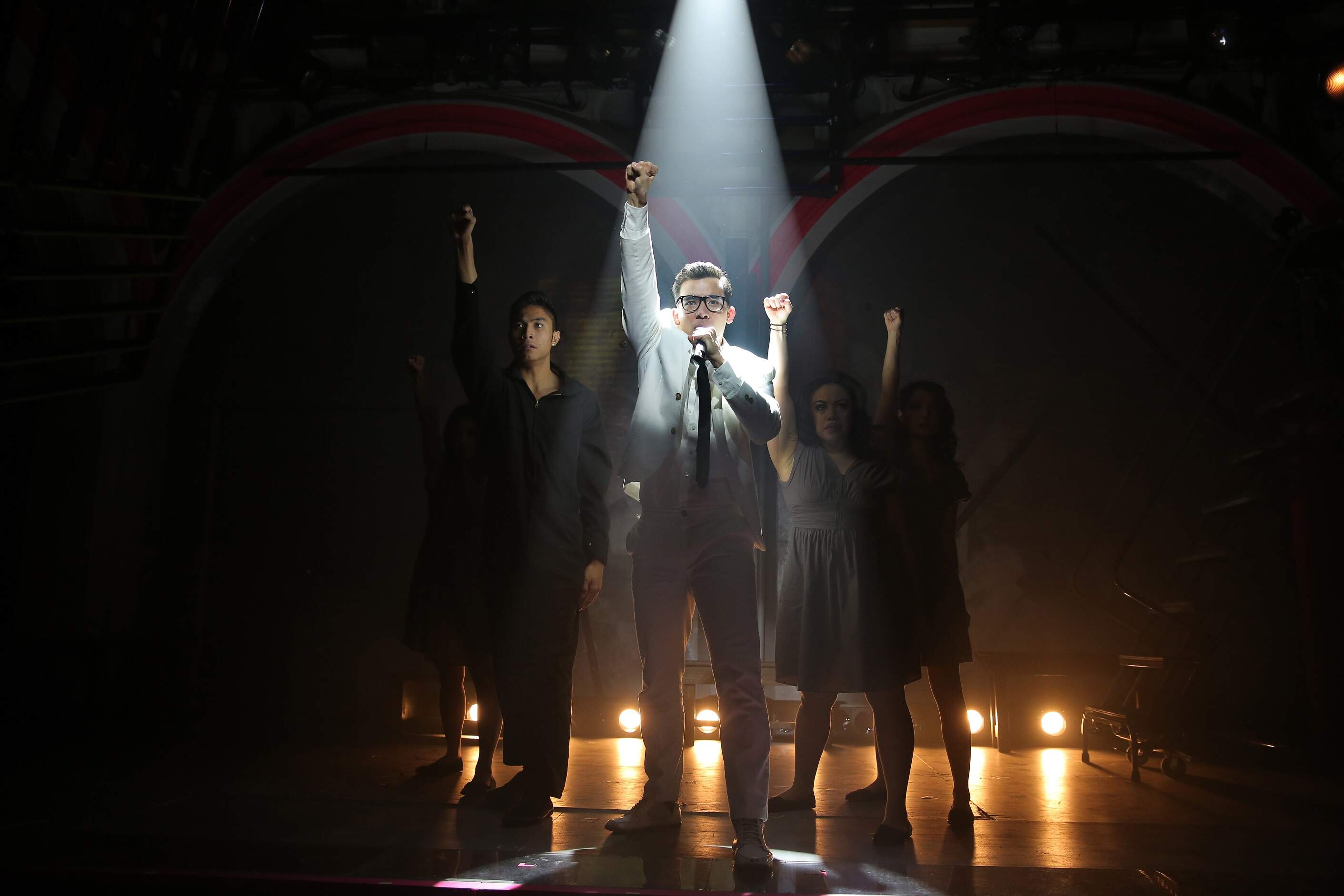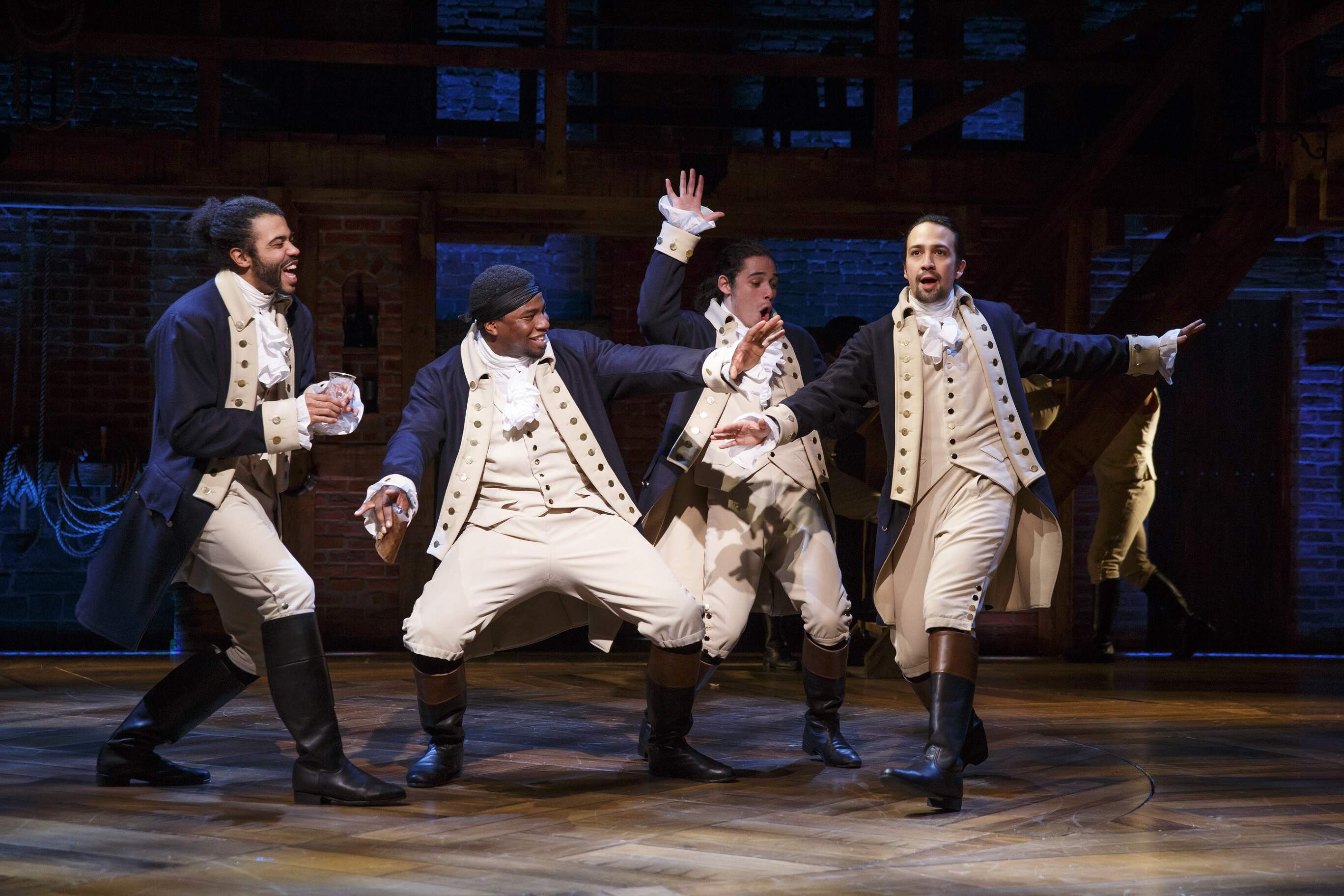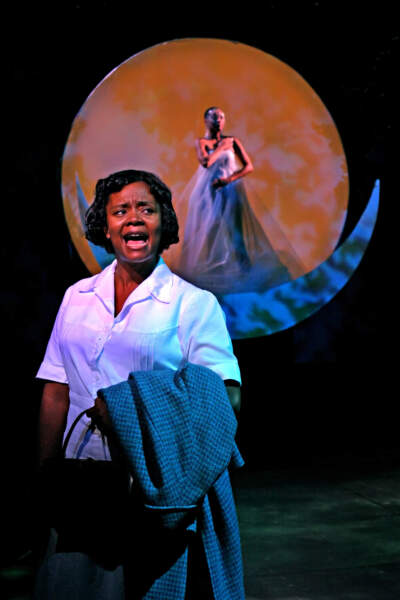Advertisement
COMMENTARY
For great musicals, New York's Public Theater is the room where it happens

Watching the road company version of “Girl from the North Country” last week it struck me that my four favorite musicals of the 21st century have one thing in common. They were all incubated by the Public Theater in New York (along with England’s Old Vic in the case of “Girl.”)
The others alongside the Conor McPherson-Bob Dylan musical in this admittedly subjective quartet: In order of appearance at the Public, “Caroline, or Change”; “Here Lies Love”; and “Hamilton.” As a fifth great musical of the century I’d add “Natasha, Pierre & the Great Comet of 1812” at the American Repertory Theater (also incubated by Ars Nova) and give honorable mention to “Fun Home” (which also began at the Public), “Next to Normal” and “Bloody Bloody Andrew Jackson.” Perhaps Michael R. Jackson’s Pulitzer-winning “A Strange Loop” will join the pantheon when it opens at SpeakEasy next month in a coproduction with Front Porch Arts Collective. (I missed it in New York.)
So what makes them great, to borrow Rob Kapilow’s title. For me, it’s a simple litmus test that goes a step beyond the theatrical experience itself. Does the world feel different not only while you’re watching but, more importantly, when you step outside the theater? To me that’s what separates the four Public shows and “Natasha” from the others. It’s also no coincidence that the only 21st century musical CDs on my shelves are the four shows from the Public.
Of course, making an audience member see the world seem like a different place is an extremely high standard for musicals or any work of art. But it’s my standard and I’m sticking to it, at least when it comes to greatness.
“Girl from the North Country” (presented by Broadway in Boston at the Emerson Colonial Theatre through March 24) is a meeting of the minds of two of the finest artists of our time, Nobel-Prize winner Bob Dylan whose songs were narratively repositioned by the soulful Irish playwright Conor McPherson (“The Weir,” “The Seafarer”). Dylan had nothing to do with the 2018 musical other than picking McPherson to do whatever he wanted with his catalogue.
And what a job he did. Taking much of the music from lesser-known and lesser-regarded Dylan albums as well as from his bigger hits, McPherson weaves a story in which each of the characters fights a Depression-era battle in which yearning and loss, both spiritual and financial, threaten to bury them alive. I’m not sure that even Dylan, who said that the production left him in tears, knew how powerful some of these “lesser” songs like “Is Your Love in Vain” could be. I didn’t.
There is little hope in the show, except perhaps for two characters, but there is redemption through Dylan’s songs and what McPherson, orchestrator Simon Hale and movement director Lucy Hind do with them. While “I Want You” morphs from a jaunty, rakish pursuit to a song of unspeakable sadness, it’s in the up-tempo numbers where the characters find release and a spirit that unites them rather than divides them. In the case of “Duquesne Whistle,” it even brings the dead back to life. And it’s that redemptiveness through the combined creative artistic power of Dylan and McPherson that has stayed with me from early days at the Public Theater through its current incarnation at the Colonial.
Advertisement

Oskar Eustis, the Public’s artistic director, told me there were three key ingredients in a Public musical:
- “That it has a strong social component. Is this something that fits our mission in terms of what it’s talking about.”
- “They involve some real restructuring of the form of musical theater, they’re experimental.” Byrne had taken “Here Lies Love” to other theaters that thought the musical couldn’t be done. “For us it was incredibly simple. It’s got to take place in a disco.” It’s the kind of creative thinking “that allows musicals that don’t have any right to work to break new ground.”
- “They have a strong authorial voice … Even the one that feels like an exception since Dylan’s music is central. But what Conor did with it is breathtaking … to take an archetype, a myth out of survival and struggle, and tell the story that Dylan has gotten closer and closer to in his own songs.” Eustis joked that “I never had an author ignore more of my ideas. He turned out to be completely right.”
The Public’s support of musicals is hardly new. “A Chorus Line” during founder Joe Papp’s running of the theater was transformative in 1975. Wolfe and Eustis, though, seemed determined to look beyond what the Broadway musical was offering post-Sondheim — pretty uninspiring and tunefully tepid in my opinion — and look for new blood. Conor McPherson, Bob Dylan, David Byrne and Tony Kushner were just what the musical world needed. As was Lin-Manuel Miranda, injecting rap music into “Hamilton.” All four shows, in fact, eschew Broadway musical language — think “The Light in the Piazza” or “Come from Away” — and draw on more rock, rap and pop genres.
“Girl from the North Country” also seems emblematic of how the Public seems to trust its artists to summon up the right, unexpected creative responses that lift the material to new heights, as McPherson did with the production. The Public was perhaps even more rewarded by David Byrne and Fatboy Slim and the creative crew that Eustis helped put together, particularly director Alex Timbers (“Bloody Bloody Andrew Jackson,” “Moulin Rouge”) and choreographer Annie-B Parson for “Here Lies Love,” which opened at the Public in 2013.
Byrne had a later Broadway success with “American Utopia,” also excellent, though that was more a rock show retrofitted into a narrative. “Here Lies Love” was Byrne’s own conception of a musical based on the life of Imelda Marcos, wife of the Filipino dictator Ferdinand Marcos. She had a prior relationship with Marcos’ political rival Benigno Aquino, Jr., whose assassination is widely laid to Marcos’ feet.
Byrne’s story and the Byrne-Slim soundtrack are strong, but again it’s what Timbers and Parson, no doubt with Byrne’s collaboration, brought to the table that made the musical great, turning the theatrical experience into a night at the disco. Hopefully there’s no video of me dancing along to the music, shaking hands with Imelda or shaking my fist at an Aquino rally — along with the glee from the music and dancing, the tragedy of the Philippines is paramount by the end of the show.

Aside from providing audience members a fun time, it makes them complicit in terms of sharing how people are attracted to strong – i.e. fascistic — politicians and the selfish pursuit of power, before flipping the tables and making us aware of what’s wrought by that complicity. I used to think that critics should stand on the sidelines and not engage in audience participation, but I wouldn’t trust any review from someone who didn’t take part. Today I can still feel both the celebration and the devastation in my bones.
That McPherson, Byrne and Kushner came to the Public with no musical theater background was “a plus, no question,” said Eustis, who also singled out composer Jeanine Tesori’s work on “Caroline, or Change” and “Fun Home” because while creating her own personal music “she values the individuality of the literary voice,” Kushner with “Caroline” and Alison Bechdel and Lisa Kron in “Fun Home.”
Lin-Manuel Miranda arrived at the Public with more of a musical background than Byrne, Kushner or McPherson — “In the Heights” was a proven winner with both critics and audiences, mixing hip-hop rhythms with more traditional Broadway melodies.
But that turned out to be just the warm-up for what came next. Though Miranda would come under fire, in retrospect, for giving short shrift to slavery’s part in the founding of the United States as well as in Hamilton’s biography, that doesn’t negate what Miranda unleashed on an unsuspecting public in 2015.

The rhymes tripped off the tongues of the mostly Black cast with greater alacrity than from the pen of any lyricist since Stephen Sondheim. And what excitement in the music, Broadway scoring going in and out of rap music with the greatest of ease. Audiences, Black and white, young and old, seemed to eat it up. Rap had, obviously, entered the American mainstream, but to quote Billie Eilish after recently winning the Grammy, this was stoopid.
Miranda’s casting of Black actors as white founding fathers (and wives, lovers and members of the ensemble) speaks to another aspect of the four Public shows. They were all magnificently multiracial in the sense that multiracialism was an integral, organic part of the stories. That was particularly true of 2003’s “Caroline, or Change,” Tony Kushner’s lyrical memoir of his Jewish upbringing in Louisiana of the ‘60s, focusing on his young stand-in character’s relationship with the African-American family maid.

As Jesse Green said in his New York Times review of the 2021 revival: “No musical has ever faced its country’s history, its creators’ history and the history of its genre as unblinkingly as ‘Caroline.’ “
Kushner’s story and lyrics occupy the same middle ground between musicals and opera as George Gershwin’s “Porgy and Bess” or Leonard Bernstein’s “Trouble in Tahiti.” And Tesori’s score complements the conception with a rich mix of R&B, gospel, klezmer and other genres. There isn’t a better musical composer in the country.
Although the writers of the musicals are men, the authorship is not an all-male club. In addition to Tesori’s stirringly eclectic score, Lucy Hind's and Annie-B Parson’s choreography are essential to the storytelling in “Girl from the North Country” and “Here Lies Love,” as was Rachel Chavkin’s direction of “Natasha, Pierre …” at ART. As Carolyn Clay said in her WBUR review of the 2015 show, “[Chavkin] has turned less than a hundred pages from the middle of Tolstoy’s [“War and Peace”] into a romantic and driving swirl of music and storytelling that is beyond exhilarating.”
Chavkin will also be directing the upcoming “Gatsby” in Cambridge, with music and lyrics from Florence Welch (Florence + the Machine) and Thomas Bartlett and a book by Martyna Majok (“Cost of Living”). Another future member of the pantheon?
Fortunately, the Public and other producers of creative musicals have a Boston soulmate in Paul Daigneault, head of SpeakEasy Stage, which has staged intimate productions of “Caroline, or Change,” “Fun Home,” “Bloody Bloody Andrew Jackson” and “Next to Normal.” We should also give a shoutout to Moonbox Productions with its acclaimed musical productions, including a strong “Caroline” in 2019.
Moonbox is now at the old Zero Arts space, renamed Arrow Street Arts, perhaps the only theater that could accommodate “Here Lies Love,” which has never been to Boston. It might be beyond Moonbox’s budget, but perhaps with SpeakEasy or another theater?
As New York’s Public Theater has proved, when first-rate artists and visionary artistic directors collaborate, the result, very often, is great art.

